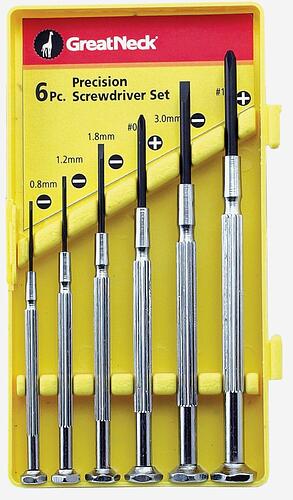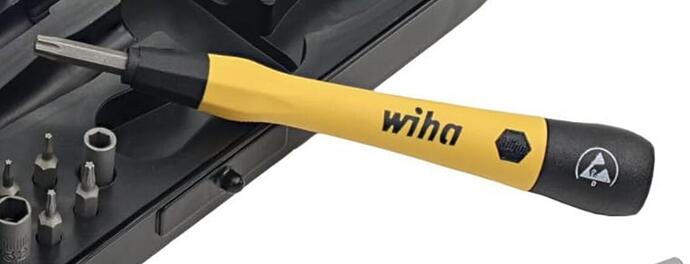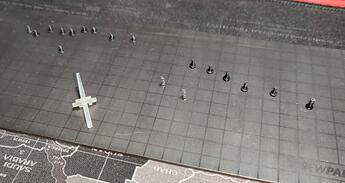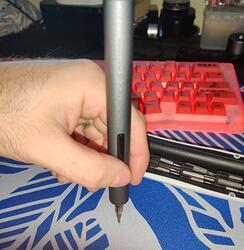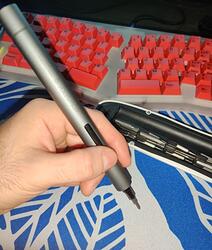- Yes
- No
- I have a more complicated answer that I will explain in a reply
I have one, and use it occasionally. Especially if I’m taking apart a Topre board with all the little screws that hold the PCB to the switch plate, but that’s about it.
But for the most part, I find the ergonomics of the electric precision screwdrivers to be awkward. If your driver has enough torque, holding it tight enough between your thumb and forefinger creates a lot of strain and discomfort over time. Instead, if you’re like me, you adopt holding it upright in your fist and actuating the switch with your pinky. This feels weird and less than precise.
In the end, nothing really beats a manual driver that’s comfortable to handle and has good ergonomics For me that includes sufficient weight for being able to spin the driver and take advantage of kinetic energy for quickly removing a fastener, knurling for the thumb and forefinger, a shape that sits well in the palm, and a pivot on the end for when you need to be able to brace with your palm. The electrics also can’t replace the tactility of a manual driver which I believe is indispensable with small fasteners.
Generally not for keyboards, but I do have a 4 AA handheld driver that can be nice if something has a bunch of screws, and one of my builds had slightly undersized holes so I may have actually used an impact driver on it.
Now that said, some of y’all have more cash invested in 2 or 3 builds than I’ve spent on my entire collection, though lets please ignore the time and tools, so I would completely understand if you never let anything electric touch your boards.
I have 24v impact drills and drivers for DIY/home repairs/woodworking, but they’d be overkill on any keyboard unless I wanted to literally drill through them. I have a good set of hex keys that come in handy plus a set of precision screwdrivers (similar to the set pictured below, but a different brand and probably at least 25 years old) that work for any Philips or slotted screws I’ve encountered on my boards.
Mostly, I don’t work on boards often enough to get any sort of time savings or possible ergonomic improvements from an electric screwdriver.
Edited to add: @Extra_Fox’s comment reminded me that I also have a Wiha 65-piece microbits set, which has a really nice 72-tooth ratcheting driver, but I rarely use it for keyboards. Sadly, the bits are not very deep, so they tend not to be able to access or tighten deep-set case screws (or any screw that has narrow tolerances around the screw). Also, the bit holder (pictured below) that comes with the set is very “meh.” It doesn’t spin smoothly and can’t seem to hold the bits all that well either.
I just remembered that I did a write up on some manual drivers if anyone is interested: Extra Fox Reviews - Precision Screwdrivers
I also use a set of these very regularly: Wera 2035/6 A Screwdriver set
I use it for the keyboard. Stabilizers too)
Two years already.
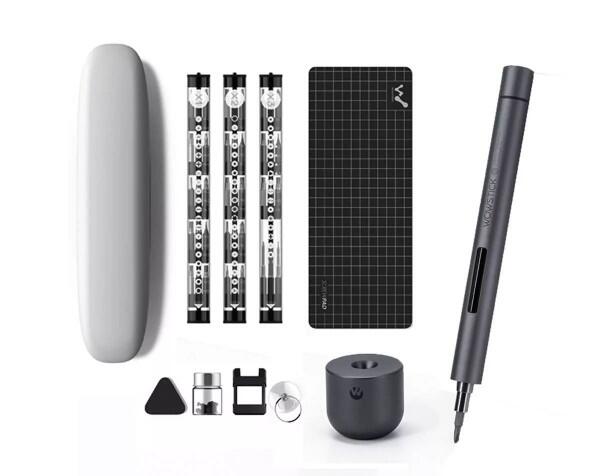
Xiaomi Wowstick 1F
Even today, I disassembled the mouse where there are many different screws.
By the way, about the grip, how to hold it with your hand.
I hold it like a pen. Left hand. Since I’m left-handed (ambidexterous).
No, and to be honest, i cringe every time i see someone use them, specially on Keyboard builds. 9 out of 10 times when i see people who cross threaded or stripped their threads or over-tightened them and cracked the plastic - it’s because of electric screw drivers. The other 1 time are people who don’t have experience with screws and don’t counter-screw until the threads snap in place, or both combined.
I don’t trust them and would never use them myself on anything i would want to keep.
This is one of the main reasons I prefer the control of a manual screwdriver for delicate work. There are few things more nerve-racking than trying to drill out or extract a teensy, tiny screw.
I don’t agree at all.
Why is it the fault of the person or the electric screwdriver, and not just that the bolt or screw itself is of terrible quality, hello Kbdfans.
When a bolt or screw is of very poor quality, the way you tighten it will not save you from failure.
Screwdrivers are different, some have very strong torque, and some have very weak.
And the lapel comes by hand. And the turn is also completed by hand.
Are these self-tapping screws so you can tighten them and unscrew them by pressing the button all the way!?!? ![]()
![]()
Because if you simply counter screw the fastener before properly screwing it in that will align the threads & keep the screw from cross threading then stripping the screw itself or the tapped die out no matter the quality of the fastener or tapped die. On top of that if you are using a manual driver you’ll have a much better feel for what the screw is doing & if it is cross threaded or not. Allowing you to stop & properly align the screw before you end up with a stripped screw or tapped die. If you are using even a low powered electric screwdriver it is much easier to miss the fact you have cross threaded screw & it more than likely will have done damage to the screw or tapped die by the time you have noticed IME.
Hmm weird.
I would like to clarify. Are we talking here now about screws or self-tapping screws?
If I translated everything you wrote correctly, then in my language it sounds like a description of tightening a self-tapping screw with a screwdriver. The screws do not fit the description of what needs to be done, what you write.
But self-tapping screws are not used in keyboards.
There are screws here.
Self-tapping screws are about wood, for example in furniture.
I can still understand it as if the person who speaks like that.
Then he represents not a manual electric screwdriver, but a large electric screwdriver that builders use. This device is used to tighten screws on furniture.
How can you write that you control it with your hand, if the screw is of poor quality, it is of poor quality. It deforms regardless of force. It’s bad because the metal is soft. If you manage to avoid crushing it once or twice, then by 3-4 it will still be deformed.
This even applies to screwdrivers. Or replaceable bits for an electric screwdriver. They are also sometimes made from low-quality soft metal. And such screwdrivers are bad, when used manually, the tip bends or grinds off. Likewise, bits for an electric screwdriver, when the metal is bad, also deteriorates.
I’m talking about screws going into a pre tapped (threaded) hole, not about self tapping screws. If you have a pre tapped (or already threaded) hole, it is best practice to actually turn the screw in the loosening direction first before starting to tighten it. What this will do is align the threads on the screw with the threads in the hole & significantly reduce the chance of cross threading the two.
It’s clear. I perceive an electric screwdriver as an ordinary one. I hold it as usual and use it as usual.
If someone uses such a thing, screws are like turning screws on wood. Well then, I’m against it too.
My screwdriver is weak, I can’t hold down the button with the pure force of the electric answer and start to unscrew it. There is not that much leverage.
And if we talk about tightening a screw, isn’t this the most basic, most primitive action when you screw the screw into the thread with your hands before you start? Is it possible any other way?
Ok, now I see why you don’t mind using a electric screwdriver. You use it in a responsible & reasonable way, plus starting the screws with your hand before using it definitely serves the same purpose as the way I start screws. So I get why you’re thinking some of of us are being overly tedious about not using a electric screwdriver. Although you’d be really surprised at how many people out there would just set the screw in the hole, put the electric driver on the screw, then just start screwing it in without any regard to properly starting the screw. Causing the screw & threaded hole to get mangled in that process. I’ve seen some boards where it only has one or two good screw holes left on it cause the original owner put no regard into properly tightening or removing them. Or boards that I’ve had to literally drill the original screws out of, then retap the screw hole for a bigger screws just to open & properly put it back together. Not to mention some of the horrors I’ve seen on the jobsite LOL! While it seems common sense to us, some people just have no sense when it comes to stuff like this.
Do you know how there are cases when Hotswap sockets on the board are squeezed out)
They press the switch so hard with their hands that the socket physically breaks.
When I wrote that “why is the person or the screwdriver to blame.” I forgot that there are such things(((
I always have a high opinion of people.
I use the same wowstick and I use it to back out screws and just hold it loosely when driving in–and hand tighten to avoid any stripping/damage. My only gripe is the bits included are usually too short and I have scratched a top case before because the wowstick just blocked visibility and I couldn’t really see where I was sticking it T_T
Otherwise, I HATE backing out long case screws by hand.
